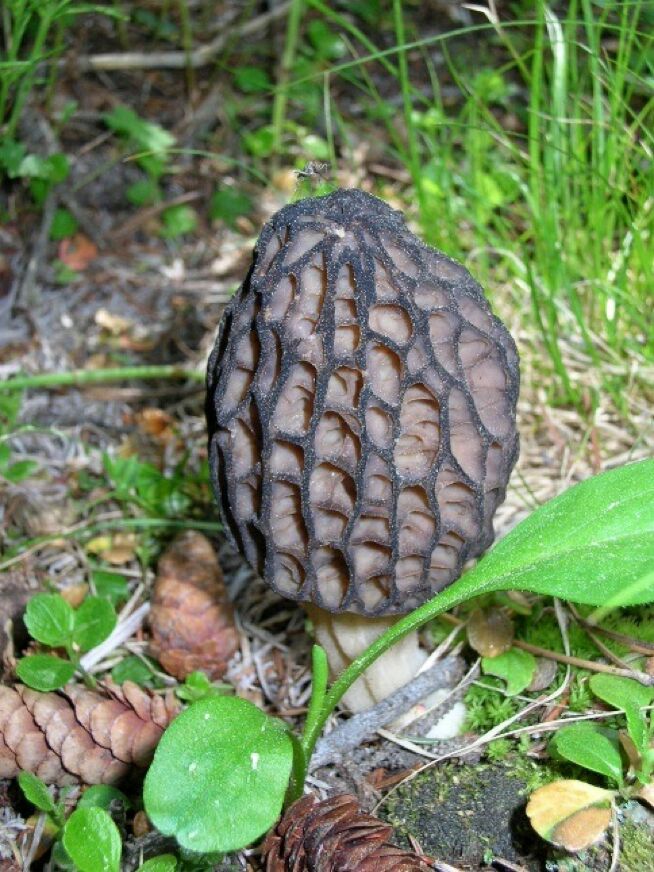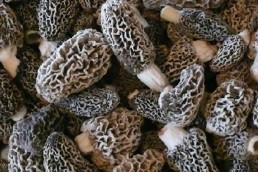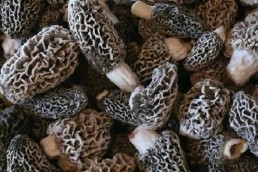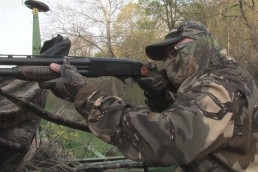Five Tips for Finding More Morels this Spring
SHARE THIS POST
- Timing is critical
Depending upon your location in the country, the morel mushroom hunting season can start anytime from mid-March to late June. Unfortunately, the date of the first sighting in your area can vary by several weeks each year so you can’t count on finding them using that date you marked on your calendar last year. The key is to have a week or so with daytime temperatures in the 60s and night time temperatures in the upper 40s. This is when the ground temperature reaches the low to mid 50s, which is the optimum growing condition for morels. Some rain to moisten the soil is required but it’s a myth is that you need the sun to really “pop” them. Some of my most productive seasons have been cloudy, rainy springs. Besides, everyone should experience mushroom hunting in the rain. The fresh smell of the woods, the sound of the rain on the Mayapples, the overwhelming feeling that you are one with the woods—absolutely nothing better!
- Don’t forget technology
With a growing season that lasts only a few weeks and a start date that can vary as much as four weeks, it’s very easy to miss the season altogether. If you want to be sure not to miss the “pop,” use technology to your advantage. Many websites have morel sightings maps (including TheGreatMorel.com). Use the sightings map to track the progression of morels from the warmer climates to the cooler states. In the U.S., morel mushrooms are found in abundance from middle Tennessee northward into Michigan and Wisconsin and Vermont and as far west as Oklahoma. By regularly visiting the sightings map you can track the progression from the southern states through the northern states. Many of the sightings maps even allow you to expand into county view to really pinpoint the start of the season in your area. The sighting map can also heighten the anticipation of the new mushroom season. Watching the sighting pins move closer to you each day is like the child opening the window each day on the Christmas calendar in anticipation of Santa!

- Tune your eyes prior to the hunt
It’s called imprinting. Have you noticed how hard it is to find that first mushroom but after finding it you start seeing more of them? Many mushroom hunters leave the first one in place while they search all around it for others. Whether they know it or not, they are training their eyes and brain to block out the background and detect the mushrooms hidden within the brush and leaves. They are imprinting. The problem with this method is you may pass over many mushrooms before finding that first one but you don’t have to pass those first ones over! You can imprint before starting the hunt. Here’s how. Some hunters will tell you to stare at photos of mushrooms but there’s a better way. Morel decoys! Decoys are carved or cast replicas of morel mushrooms. You can find morel decoys molded from real morel mushrooms, which make them extremely realistic. A few weeks before mushroom season you can have a friend or spouse hide morel decoys in your yard or even about the house. Your eyes (and brain) will get used to detecting them. This method can really help you find that first ’shroom!
Are you enjoying this post?
You can be among the first to get the latest info on where to go, what to use and how to use it!

- Hunting the trees
Successful morel mushroom hunters seem to fall into two groups. Those who look for certain varieties of trees (tree hunters) and those who look for distinctions in the lay of the land. The dead elm is a favorite among the “tree hunters” but many also swear by hickory, ash, or sycamore trees. Some even say there is a symbiotic relationship between morels and the trees. This is certainly true of many types of fungi but since morels can sometimes be found growing in a treeless yard, patch of moss, or on a muddy bank, it is hard to prove this theory. However, the continued success of many “tree hunters” cannot be denied so this method should not discounted. One tree hunting method in which almost all avid mushroom hunters agree is that old apple orchards produce morels. If you are lucky enough to hunt an area with old apple trees, check it often. Don’t give up on it as many times the large yellow morels that grow beneath them appear about a week after everything else is gone.
- Hunting the ‘lay of the land’
The “lay of the land” mushroom hunting method is employed by many successful morel hunters. A favorite strategy is to hunt the south and southwest sides of the hills early in the season. These areas get more of the early spring sun, warming the ground to the optimum growing temperature and therefore producing the first morels of the season. As the warmer days continue, track the mushrooms deeper into the woods. An exception to this strategy is the black morel mushroom. Typically, this variety of the morel mushroom is found in large groups at the very start of the season. Many times blacks appear a week or so before the first sign of grays or yellows. The hilltops in the middle of the woods seem to be the best location for finding the mother lode of these black sponges. Yet another strategy used by “lay of the land” mushroom hunters is to hunt the troughs. Hunting the troughs means to hunt the depressions, washouts, run-offs and small ravines within the woods. The theory is that the morel spores carried by the wind and rain are deposited here. Hunters find any morel mushrooms in these areas so do not discount this method.
I hope this article helps you find more morels this year. To have your mushroom hunting tips and photos included on our website, submit them online at TheGreatMorel.com. MWO
MWO
SHARE THIS POST
Did you enjoy this post?
You can be among the first to get the latest info on where to go, what to use and how to use it!
MWO
We believe being outdoors is good. With more than 1,000 articles each year, MidWest Outdoors magazine is all about sharing outdoor experiences with you—where to go, what to use and how to use it… whether you’re close to home or on that trip of a lifetime.



